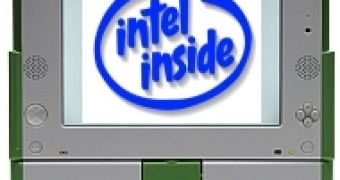After down playing Nicholas Negroponte's OLPC, One Laptop Per Child, program and calling the XO machine "the $100 gadget", Intel reviewed its actions and decided to take part in the program. As most people suspect already, this was not really a selfless decision: Intel pressures the OLPC to adopt a new core architecture for the second generation of XO machines. And guess what, the said architecture is based on an Intel processor and chipset.
Until the technical specifications of the second generation of XO laptops becomes available, one thing is clear as Intel already pushed its Xeon processor as the replacement for the XSX school server that complements the XOs. Currently, these servers come with a fanless design motherboard and processor from VIA. According to Intel's own press release concerning future collaborations with the OLPC program, "OLPC is planning to add Intel? Xeon? processor based servers to their product offerings, taking advantage of world class performance, reliability and energy efficiency. In addition, Intel is developing a system board design for OLPC consideration in their next generation XO device". So, in other words, both the processor and the chipset will be supplied by Intel, leaving other companies behind.
The second generation of XO machines will have an Intel processor and maybe even chipset, if the giant manufacturer has anything to say about that and they are planning to replace the AMD Geode LX-700 processor that can be now found inside the XO-1 machines with Intel?s 2008 Mobile Internet Device (MID for short) platform, which includes processor, chipset and wireless networking controller.
From the user?s point of view, it doesn?t really matter what architecture their machine is using as long as it does the job right, but from recent history we know that Intel did not invest too much into energy savings and high efficiency profiles but into raw computing power. While using a desktop or a traditional laptop, Intel's higher consumption processors and chipsets are no big problem, inside a machine with energy specifications as low as the current XO, it may lead to a really big battery drain and decrease functioning time. On the performance part, Intel has a good spot, but the XO machines were not designed for fancy games or CPU intensive applications and such. And maybe the most important question for the OLPC program, before adopting Intel's mobile platform, should be: "Exactly how much would a future XO cost using Intel parts?"

 14 DAY TRIAL //
14 DAY TRIAL //